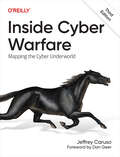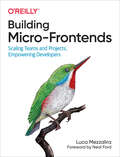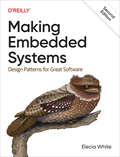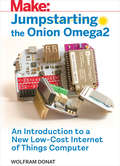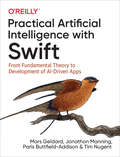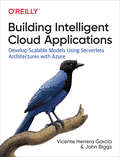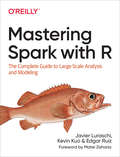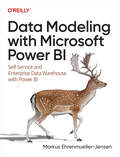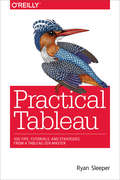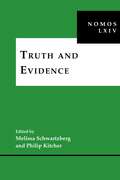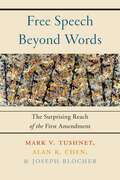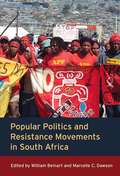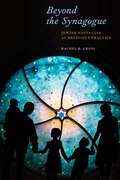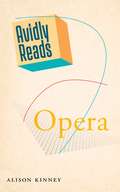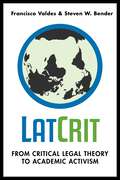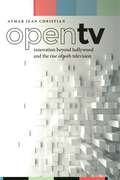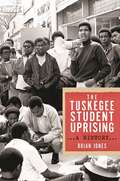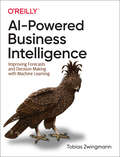- Table View
- List View
Inside Cyber Warfare: Mapping the Cyber Underworld
by Jeffrey CarusoGet a fascinating and disturbing look into how state and nonstate actors throughout the world use cyber attacks to gain military, political, and economic advantages. In the third edition of this book, cyber warfare researcher Jeffrey Caruso explores the latest advances in cyber espionage and warfare that have emerged on the battlefields of Ukraine and the Middle East, including cyber attacks that result in the physical destruction of the target and the pairing of cognitive with maneuver warfare.Inside Cyber Warfare features an exclusive deep dive into the wartime operations of an offensive cyber unit of Ukraine's Ministry of Defense as it works to defend the nation against Russian forces, particularly since the 2022 invasion:See what happened when a Ukrainian cyber and special operations team worked together to destroy a secret missile laboratoryExplore the legal status of cyber warfare and civilian hackersDiscover how a cyber team with little money and limited resources learned to create fire from the manipulation of code in automated systemsDistinguish reality from fiction regarding AI safety and existential riskLearn new strategies for keeping you and your loved ones safe in an increasingly complex and insecure world
Building Micro-Frontends: Scaling Teams and Projects, Empowering Developers
by Luca MezzaliraWhat's the answer to today's increasingly complex web applications? Micro-frontends. Inspired by the microservices model, this approach lets you break interfaces into separate features managed by different teams of developers. With this practical guide, Luca Mezzalira shows software architects, tech leads, and software developers how to build and deliver artifacts atomically rather than use a big bang deployment.You'll learn how micro-frontends enable your team to choose any library or framework. This gives your organization technical flexibility and allows you to hire and retain a broad spectrum of talent. Micro-frontends also support distributed or colocated teams more efficiently. Pick up this book and learn how to get started with this technological breakthrough right away.Explore available frontend development architecturesLearn how microservice principles apply to frontend developmentUnderstand the four pillars for creating a successful micro-frontend architectureExamine the benefits and pitfalls of existing micro-frontend architecturesLearn principles and best practices for creating successful automation strategiesDiscover patterns for integrating micro-frontend architectures using microservices or a monolith API layer
Introduction to Machine Learning with R: Rigorous Mathematical Analysis
by Scott V. BurgerMachine learning is an intimidating subject until you know the fundamentals. If you understand basic coding concepts, this introductory guide will help you gain a solid foundation in machine learning principles. Using the R programming language, you’ll first start to learn with regression modelling and then move into more advanced topics such as neural networks and tree-based methods.Finally, you’ll delve into the frontier of machine learning, using the caret package in R. Once you develop a familiarity with topics such as the difference between regression and classification models, you’ll be able to solve an array of machine learning problems. Author Scott V. Burger provides several examples to help you build a working knowledge of machine learning.Explore machine learning models, algorithms, and data trainingUnderstand machine learning algorithms for supervised and unsupervised casesExamine statistical concepts for designing data for use in modelsDive into linear regression models used in business and scienceUse single-layer and multilayer neural networks for calculating outcomesLook at how tree-based models work, including popular decision treesGet a comprehensive view of the machine learning ecosystem in RExplore the powerhouse of tools available in R’s caret package
Making Embedded Systems: Design Patterns for Great Software
by Elecia WhiteInterested in developing embedded systems? Since they don't tolerate inefficiency, these systems require a disciplined approach to programming. This easy-to-read guide helps you cultivate good development practices based on classic software design patterns and new patterns unique to embedded programming. You'll learn how to build system architecture for processors, not for operating systems, and you'll discover techniques for dealing with hardware difficulties, changing designs, and manufacturing requirements.Written by an expert who has created systems ranging from DNA scanners to children's toys, this book is ideal for intermediate and experienced programmers, no matter what platform you use. This expanded second edition includes new chapters on IoT and networked sensors, motors and movement, debugging, data handling strategies, and more.Optimize your system to reduce cost and increase performanceDevelop an architecture that makes your software robust in resource-constrained environmentsExplore sensors, displays, motors, and other I/O devicesReduce RAM and power consumption, code space, and processor cyclesLearn how to interpret schematics, datasheets, and power requirementsDiscover how to implement complex mathematics and machine learning on small processorsDesign effective embedded systems for IoT and networked sensors
In Darfur: An Account of the Sultanate and Its People, Volume One (Library of Arabic Literature #12)
by Muḥammad al-TūnisīA merchant’s account of his travels through an independent African state Muhammad ibn 'Umar al-Tunisi (d. 1274/1857) belonged to a family of Tunisian merchants trading with Egypt and what is now Sudan. Al-Tunisi was raised in Cairo and a graduate of al-Azhar. In 1803, at the age of fourteen, al-Tunisi set off for the Sultanate of Darfur, where his father had decamped ten years earlier. He followed the Forty Days Road, was reunited with his father, and eventually took over the management of the considerable estates granted to his father by the sultan of Darfur. In Darfur is al-Tunisi’s remarkable account of his ten-year sojourn in this independent state. In Volume One, al-Tunisi relates the history of his much-traveled family, his journey from Egypt to Darfur, and the reign of the noted sultan 'Abd al-Rahman al-Rashid. In Darfur combines literature, history, ethnography, linguistics, and travel adventure, and most unusually for its time, includes fifty-two illustrations, all drawn by the author. In Darfur is a rare example of an Arab description of Africa on the eve of Western colonization and vividly evokes a world in which travel was untrammeled by bureaucracy, borders were fluid, and startling coincidences appear almost mundane.A bilingual Arabic-English edition.
Jumpstarting the Onion Omega2
by Wolfram DonatGet up and running quickly with the Jumpstarting series!Jumpstarting books provide an avenue for makers to quickly master topical knowledge.Each book starts with instructions on how to install or initialize the hardware or software needed to reach the all-important "Hello, World" stage of getting started.The second project builds on the first to use more of the hardware or software's capabilities.The final project expands the user's knowledge into lesser-known aspects of the topic. All Jumpstarting projects are for Makers -- they provide hands-on, real-world experience in making the hardware or software do what you want it to do.
Cloud Native: Using Containers, Functions, and Data to Build Next-Generation Applications
by Peter Jausovec Boris Scholl Trent SwansonDevelopers often struggle when first encountering the cloud. Learning about distributed systems, becoming familiar with technologies such as containers and functions, and knowing how to put everything together can be daunting. With this practical guide, you’ll get up to speed on patterns for building cloud native applications and best practices for common tasks such as messaging, eventing, and DevOps.Authors Boris Scholl, Trent Swanson, and Peter Jausovec describe the architectural building blocks for a modern cloud native application. You’ll learn how to use microservices, containers, serverless computing, storage types, portability, and functions. You’ll also explore the fundamentals of cloud native applications, including how to design, develop, and operate them.Explore the technologies you need to design a cloud native applicationDistinguish between containers and functions, and learn when to use themArchitect applications for data-related requirementsLearn DevOps fundamentals and practices for developing, testing, and operating your applicationsUse tips, techniques, and best practices for building and managing cloud native applicationsUnderstand the costs and trade-offs necessary to make an application portable
Practical Artificial Intelligence with Swift: From Fundamental Theory to Development of AI-Driven Apps
by Paris Buttfield-Addison Jonathon Manning Tim Nugent Mars GeldardCreate and implement AI-based features in your Swift apps for iOS, macOS, tvOS, and watchOS. With this practical book, programmers and developers of all kinds will find a one-stop shop for AI and machine learning with Swift. Taking a task-based approach, you’ll learn how to build features that use powerful AI features to identify images, make predictions, generate content, recommend things, and more.AI is increasingly essential for every developer—and you don’t need to be a data scientist or mathematician to take advantage of it in your apps. Explore Swift-based AI and ML techniques for building applications. Learn where and how AI-driven features make sense. Inspect tools such as Apple’s Python-powered Turi Create and Google’s Swift for TensorFlow to train and build models.I: Fundamentals and Tools—Learn AI basics, our task-based approach, and discover how to build or find a dataset.II: Task Based AI—Build vision, audio, text, motion, and augmentation-related features; learn how to convert preexisting models.III: Beyond—Discover the theory behind task-based practice, explore AI and ML methods, and learn how you can build it all from scratch... if you want to
Building Intelligent Cloud Applications: Develop Scalable Models Using Serverless Architectures with Azure
by John Biggs Vicente Herrera GarcíaServerless computing is radically changing the way we build and deploy applications. With cloud providers running servers and managing machine resources, companies now can focus solely on the application’s business logic and functionality. This hands-on book shows experienced programmers how to build and deploy scalable machine learning and deep learning models using serverless architectures with Microsoft Azure.You’ll learn step-by-step how to code machine learning into your projects using Python and pretrained models that include tools such as image recognition, speech recognition, and classification. You’ll also examine issues around deployment and continuous delivery, including scaling, security, and monitoring.This book is divided into three parts with application examples woven throughout:Cloud-based development: Learn the basics of serverless computing with machine learning, Functions-as-a-Service (FaaS), and the use of APIsAdding intelligence: Create serverless applications using Azure Functions; learn how to use prebuilt machine learning and deep learning modelsDeployment and continuous delivery: Get up to speed with Azure Kubernetes Service, Azure Security Center, and Azure Monitoring
Mastering Spark with R: The Complete Guide to Large-Scale Analysis and Modeling
by Javier Luraschi Kevin Kuo Edgar RuizIf you’re like most R users, you have deep knowledge and love for statistics. But as your organization continues to collect huge amounts of data, adding tools such as Apache Spark makes a lot of sense. With this practical book, data scientists and professionals working with large-scale data applications will learn how to use Spark from R to tackle big data and big compute problems.Authors Javier Luraschi, Kevin Kuo, and Edgar Ruiz show you how to use R with Spark to solve different data analysis problems. This book covers relevant data science topics, cluster computing, and issues that should interest even the most advanced users.Analyze, explore, transform, and visualize data in Apache Spark with RCreate statistical models to extract information and predict outcomes; automate the process in production-ready workflowsPerform analysis and modeling across many machines using distributed computing techniquesUse large-scale data from multiple sources and different formats with ease from within SparkLearn about alternative modeling frameworks for graph processing, geospatial analysis, and genomics at scaleDive into advanced topics including custom transformations, real-time data processing, and creating custom Spark extensions
Data Modeling with Microsoft Power BI: Self-Service and Enterprise Data Warehouse with Power BI
by Markus Ehrenmueller-JensenData modeling is the single most overlooked feature in Power BI Desktop, yet it's what sets Power BI apart from other tools on the market. This practical book serves as your fast-forward button for data modeling with Power BI, Analysis Services tabular, and SQL databases. It serves as a starting point for data modeling, as well as a handy refresher.Author Markus Ehrenmueller-Jensen, founder of Savory Data, shows you the basic concepts of Power BI's semantic model with hands-on examples in DAX, Power Query, and T-SQL. If you're looking to build a data warehouse layer, chapters with T-SQL examples will get you started. You'll begin with simple steps and gradually solve more complex problems.This book shows you how to:Normalize and denormalize with DAX, Power Query, and T-SQLApply best practices for calculations, flags and indicators, time and date, role-playing dimensions and slowly changing dimensionsSolve challenges such as binning, budget, localized models, composite models, and key value with DAX, Power Query, and T-SQLDiscover and tackle performance issues by applying solutions in DAX, Power Query, and T-SQLWork with tables, relations, set operations, normal forms, dimensional modeling, and ETL
Practical Tableau: 100 Tips, Tutorials, and Strategies from a Tableau Zen Master
by Ryan SleeperWhether you have some experience with Tableau software or are just getting started, this manual goes beyond the basics to help you build compelling, interactive data visualization applications. Author Ryan Sleeper, one of the worldâ??s most qualified Tableau consultants, complements his web posts and instructional videos with this guide to give you a firm understanding of how to use Tableau to find valuable insights in data.Over five sections, Sleeperâ??recognized as a Tableau Zen Master, Tableau Public Visualization of the Year author, and Tableau Iron Viz Championâ??provides visualization tips, tutorials, and strategies to help you avoid the pitfalls and take your Tableau knowledge to the next level.Practical Tableau sections include:Fundamentals: get started with Tableau from the beginningChart types: use step-by-step tutorials to build a variety of charts in TableauTips and tricks: learn innovative uses of parameters, color theory, how to make your Tableau workbooks run efficiently, and moreFramework: explore the INSIGHT framework, a proprietary process for building Tableau dashboardsStorytelling: learn tangible tactics for storytelling with data, including specific and actionable tips you can implement immediately
Reliable Machine Learning: Applying SRE Principles to ML in Production
by Niall Richard Murphy Kranti Parisa Cathy Chen D. Sculley Todd UnderwoodWhether you're part of a small startup or a multinational corporation, this practical book shows data scientists, software and site reliability engineers, product managers, and business owners how to run and establish ML reliably, effectively, and accountably within your organization. You'll gain insight into everything from how to do model monitoring in production to how to run a well-tuned model development team in a product organization. By applying an SRE mindset to machine learning, authors and engineering professionals Cathy Chen, Kranti Parisa, Niall Richard Murphy, D. Sculley, Todd Underwood, and featured guest authors show you how to run an efficient and reliable ML system. Whether you want to increase revenue, optimize decision making, solve problems, or understand and influence customer behavior, you'll learn how to perform day-to-day ML tasks while keeping the bigger picture in mind. You'll examine:What ML is: how it functions and what it relies onConceptual frameworks for understanding how ML "loops" workHow effective productionization can make your ML systems easily monitorable, deployable, and operableWhy ML systems make production troubleshooting more difficult, and how to compensate accordinglyHow ML, product, and production teams can communicate effectively
Truth and Evidence: NOMOS LXIV (NOMOS - American Society for Political and Legal Philosophy #36)
by Philip Kitcher Melissa SchwartzbergExplores the challenges of governing in a post-truth worldThe relationship between truth and politics has rarely seemed more troubled, with misinformation on the rise, and the value of expertise in democratic decision-making increasingly being dismissed. In Truth and Evidence, the latest installment in the NOMOS series, Melissa Schwartzberg and Philip Kitcher bring together a distinguished group of interdisciplinary scholars in political science, law, and philosophy to explore the most pressing questions about the role of truth, evidence, and knowledge in government. In nine timely essays, contributors examine what constitutes political knowledge, who counts as an expert, how we should weigh evidence, and what can be done to address deep disinformation. Together, they address urgent questions such as what facts we require to confront challenges like COVID-19; what it means to #BelieveWomen; and how white supremacy shapes the law of evidence. Essential reading for our fraught political moment, Truth and Evidence considers the importance of truth in the face of widespread efforts to turn it into yet another tool of political power.
Free Speech Beyond Words: The Surprising Reach of the First Amendment
by Mark V. Tushnet Alan K. Chen Joseph BlocherA look at First Amendment coverage of music, non-representational art, and nonsenseThe Supreme Court has unanimously held that Jackson Pollock’s paintings, Arnold Schöenberg’s music, and Lewis Carroll’s poem “Jabberwocky” are “unquestionably shielded” by the First Amendment. Nonrepresentational art, instrumental music, and nonsense: all receive constitutional coverage under an amendment protecting “the freedom of speech,” even though none involves what we typically think of as speech—the use of words to convey meaning. As a legal matter, the Court’s conclusion is clearly correct, but its premises are murky, and they raise difficult questions about the possibilities and limitations of law and expression. Nonrepresentational art, instrumental music, and nonsense do not employ language in any traditional sense, and sometimes do not even involve the transmission of articulable ideas. How, then, can they be treated as “speech” for constitutional purposes? What does the difficulty of that question suggest for First Amendment law and theory? And can law resolve such inquiries without relying on aesthetics, ethics, and philosophy? Comprehensive and compelling, this book represents a sustained effort to account, constitutionally, for these modes of “speech.” While it is firmly centered in debates about First Amendment issues, it addresses them in a novel way, using subject matter that is uniquely well suited to the task, and whose constitutional salience has been under-explored. Drawing on existing legal doctrine, aesthetics, and analytical philosophy, three celebrated law scholars show us how and why speech beyond words should be fundamental to our understanding of the First Amendment.
Popular Politics and Resistance Movements in South Africa
by William Beinart & Marcelle C DawsonAn examination of post-apartheid politicsThis volume explores some of the key features of popular politics and resistance before and after 1994. It looks at continuities and changes in the forms of struggle and ideologies involved, as well as the significance of post-apartheid grassroots politics. Is this a new form of politics or does it stand as a direct descendent of the insurrectionary impulses of the late apartheid era? Posing questions about continuity and change before and after 1994 raises key issues concerning the nature of power and poverty in the country. Contributors suggest that expressions of popular politics are deeply set within South African political culture and still have the capacity to influence political outcomes. The introduction by William Beinart links the papers together, places them in context of recent literature on popular politics and 'history from below' and summarises their main findings, supporting the argument that popular politics outside of the party system remain significant in South Africa and help influence national politics. The roots of this collection lie in post-graduate student research conducted at the University of Oxford in the early twenty-first century.
Beyond the Synagogue: Jewish Nostalgia as Religious Practice (North American Religions #6)
by Rachel B. GrossFinalist for the 2021 National Jewish Book Award in American Jewish StudiesHonorable Mention, 2021 Saul Viener Book Prize, given by the American Jewish Historical SocietyReveals nostalgia as a new way of maintaining Jewish continuityIn 2007, the Museum at Eldridge Street opened at the site of a restored nineteenth-century synagogue originally built by some of the first Eastern European Jewish immigrants in New York City. Visitors to the museum are invited to stand along indentations on the floor where footprints of congregants past have worn down the soft pinewood. Here, many feel a palpable connection to the history surrounding them.Beyond the Synagogue argues that nostalgic activities such as visiting the Museum at Eldridge Street or eating traditional Jewish foods should be understood as American Jewish religious practices. In making the case that these practices are not just cultural, but are actually religious, Rachel B. Gross asserts that many prominent sociologists and historians have mistakenly concluded that American Judaism is in decline, and she contends that they are looking in the wrong places for Jewish religious activity. If they looked outside of traditional institutions and practices, such as attendance at synagogue or membership in Jewish Community Centers, they would see that the embrace of nostalgia provides evidence of an alternative, under-appreciated way of being Jewish and of maintaining Jewish continuity. Tracing American Jews’ involvement in a broad array of ostensibly nonreligious activities, including conducting Jewish genealogical research, visiting Jewish historic sites, purchasing books and toys that teach Jewish nostalgia to children, and seeking out traditional Jewish foods, Gross argues that these practices illuminate how many American Jews are finding and making meaning within American Judaism today.
Avidly Reads Opera
by Alison Kinney“Opera is community, comfort, art, voice, breath, life. It’s hope.”All art exists to make life more bearable. For Alison Kinney, it was the wild, fantastical world of opera that transformed her listening and her life. Whether we’re listening for the first time or revisiting the arias that first stole our hearts, Avidly Reads Opera welcomes readers and listeners to a community full of friendship, passion, critique—and, always, beautiful music. In times of delirious, madcap fun and political turmoil, opera fans have expressed their passion by dispatching records into the cosmos, building fairy-tale castles, and singing together through the arduous work of social activism. Avidly Reads Opera is a love letter to the music and those who love it, complete with playlists, a crowdsourced tip sheet from ultra-fans to newbies, and stories of the turbulent, genre-busting, and often hilarious history of opera and its audiences.Across five acts—and the requisite intermission—Alison Kinney takes us everywhere opera’s rich melodies are heard, from the cozy bedrooms of listeners at home, to exclusive music festivals, to protests, and even prisons. Part of the Avidly Reads series, this slim book gives us a new way of looking at culture. With the singular blend of personal reflection and cultural criticism featured in the series, Avidly Reads Opera is an homage to the marvelous, sensational world of opera for the casual viewer.
Denied: Women, Sports, and the Contradictions of Identity
by Michelle J. MannoA courtside view of how women athletes’ identities are policed, on and off the courtWomen’s college basketball is big business—top teams bring in millions of dollars in revenue for their schools. Women’s NCAA games are broadcast regularly on sports networks, and many of the top players and coaches are household names. Yet these athletes face immense pressure to be more than successful at their sport. They must also conform to expectations about gender, sexuality, and race—expectations that are often in direct contrast to success in the game. They are not supposed to have muscles that are too big, they are not supposed to be too tough, they are not supposed to be too masculine or “look like men,” and they are not supposed to be queer.A former college athlete herself, Michelle J. Manno spent a full season with a highly competitive NCAA Division I women’s basketball program as one of the team’s managers. In vivid detail, she takes us on the court, on the team bus, into the locker room, and to championship games to show the intense dedication that these women give to the game. She found, perhaps unsurprisingly, that these extremely talented women were strictly policed around the presentation of their gender and sexuality, especially the athletes who were Black. They were routinely monitored, banned from engaging in certain activities, and often punished for behavior that put their queerness, Blackness, and masculinity on display. Convincingly conforming to conventional expectations of gender and sexuality—from the clothes they wore to the people they dated—was yet another challenge at which they needed to excel. Importantly, Manno also highlights several well-known contemporary professional athletes—Brittney Griner, Serena Williams, Gabby Douglas, and Caster Semenya, among others—to show that fame and performing at the highest levels in sport does not protect women athletes from having to navigate the conflicting and often contradictory expectations of identity.A riveting portrait of an elite basketball program, Denied will forever change our understanding of women athletes and the sports they play.
LatCrit: From Critical Legal Theory to Academic Activism
by Steven W. Bender Francisco ValdesExamines LatCrit’s emergence as a scholarly and activist community within and beyond the US legal academyEmerging from the US legal academy in 1995, LatCrit theory is a genre of critical outsider jurisprudence—a vital hub of contemporary scholarship that includes Feminist Legal Theory and Critical Race Theory, among other critical schools of legal knowledge. Its basic goals have been: (1) to develop a critical, activist, and inter-disciplinary discourse on law and society affecting Latinas/os/x, and (2) to foster both the development of coalitional theory and practice as well as the accessibility of this knowledge to agents of social and legal transformative change.This slim volume tells the story of LatCrit’s growth and influence as a scholarly and activist community. Francisco Valdes and Steven W. Bender offer a living example of how critical outsider academics can organize long-term collective action, both in law and society, that will help those similarly inclined to better organize themselves. Part roadmap, part historical record, and part a path forward, LatCrit: From Critical Legal Theory to Academic Activismshows that with coalition, collaboration, and community, social transformation can take root.
Open TV: Innovation beyond Hollywood and the Rise of Web Television (Postmillennial Pop #20)
by Aymar Jean ChristianHow the internet transformed television Before HBO’s hit show Insecure, Issa Rae’s comedy about being a nerdy black woman debuted as a YouTube web series The Misadventures of Awkward Black Girl, her response to the absence of diverse black characters on the small screen. Broad City, a feminist sitcom now on Comedy Central, originated as a web series on YouTube, developed directly out of funny women Ilana Glazer and Abbi Jacobson’s real-life friendship. These unconventional stories took advantage of the freedom afforded outside the traditional television system: online. Open TV shows how we have left “the network era” far behind and entered the networked era, with the web opening up new possibilities for independent producers, entrepreneurs, and media audiences. Based on interviews with writers, producers, show-runners, and network executives, visits to festivals and award shows, and the experience of producing his own series, Aymar Jean Christian argues that the web brought innovation to television by opening up series development to new producers, fans, and sponsors that had previously been excluded. Online access to distribution provides creative freedom for indie producers, allows for more diverse storytelling from marginalized communities, and introduces new ways of releasing and awarding shows. Open TV is essential reading for anyone interested in the changing environment of television and how the internet can inspire alternatives to what’s on TV tonight.
The Tuskegee Student Uprising: A History (Black Power #2)
by Brian JonesBCALA 2023 Nonfiction Award WinnerHistory of Education Society's Outstanding Book Award 2022 SemifinalistNamed one of the top 25 books all students should read by Tuskegee UniversityThe untold story of a dynamic student movement on one of the nation’s most important historically Black campusesThe Tuskegee Institute, one of the nation’s most important historically Black colleges, is primarily known for its World War II pilot training program, a fateful syphilis experiment, and the work of its founder, Booker T. Washington. In The Tuskegee Student Uprising, Brian Jones explores an important yet understudied aspect of the campus’s history: its radical student activism.Drawing upon years of archival research and interviews with former students, professors, and administrators, Brian Jones provides an in-depth account of one of the most dynamic student movements in United States history. The book takes the reader through Tuskegee students’ process of transformation and intellectual awakening as they stepped off campus to make unique contributions to southern movements for democracy and civil rights in the 1960s. In 1966, when one of their classmates was murdered by a white man in an off-campus incident, Tuskegee students began organizing under the banner of Black Power and fought for sweeping curricular and administrative reforms on campus. In 1968, hundreds of students took the Board of Trustees hostage and presented them with demands to transform Tuskegee Institute into a “Black University.” This explosive movement was thwarted by the arrival of the Alabama National Guard and the school’s temporary closure, but the students nevertheless claimed an impressive array of victories. Jones retells these and other events in relation to the broader landscape of social movements in those pivotal years, as well as in connection to the long pattern of dissent and protest within the Tuskegee Institute community, stretching back to the 19th century. A compelling work of scholarship, The Tuskegee Student Uprising is a must-read for anyone interested in student activism and the Black freedom movement.
Machine Learning Pocket Reference: Working with Structured Data in Python
by Matt HarrisonWith detailed notes, tables, and examples, this handy reference will help you navigate the basics of structured machine learning. Author Matt Harrison delivers a valuable guide that you can use for additional support during training and as a convenient resource when you dive into your next machine learning project.Ideal for programmers, data scientists, and AI engineers, this book includes an overview of the machine learning process and walks you through classification with structured data. You’ll also learn methods for clustering, predicting a continuous value (regression), and reducing dimensionality, among other topics.This pocket reference includes sections that cover:Classification, using the Titanic datasetCleaning data and dealing with missing dataExploratory data analysisCommon preprocessing steps using sample dataSelecting features useful to the modelModel selectionMetrics and classification evaluationRegression examples using k-nearest neighbor, decision trees, boosting, and moreMetrics for regression evaluationClusteringDimensionality reductionScikit-learn pipelines
Hands-On Smart Contract Development with Hyperledger Fabric V2: Building Enterprise Blockchain Applications
by Xun Brian Wu Matt Zand Mark Anthony MorrisBlockchain technology continues to disrupt a wide variety of organizations, from small businesses to the Fortune 500. Today hundreds of blockchain networks are in production, including many built with Hyperledger Fabric. This practical guide shows developers how the latest version of this blockchain infrastructure provides an ideal foundation for developing enterprise blockchain applications or solutions.Authors Matt Zand, Xun Wu, and Mark Anthony Morris demonstrate how the versatile design of Hyperledger Fabric 2.0 satisfies a broad range of industry use cases. Developers with or without previous Hyperledger experience will discover why no other distributed ledger technology framework enjoys such wide adoption by cloud service providers such as Amazon, Alibaba, IBM, Google, and Oracle.Walk through the architecture and components of Hyperledger Fabric 2.0Migrate your current Hyperledger Fabric projects to version 2.0Develop blockchain applications on the Hyperledger platform with Node.jsDeploy and integrate Hyperledger on Amazon Managed Blockchain, IBM Cloud, and Oracle CloudDevelop blockchain applications with Hyperledger Aries, Avalon, Besu, and GridBuild end-to-end blockchain supply chain applications with Hyperledger
AI-Powered Business Intelligence: Improving Forecasts and Decision Making with Machine Learning
by Tobias ZwingmannUse business intelligence to power corporate growth, increase efficiency, and improve corporate decision making. With this practical book featuring hands-on examples in Power BI with basic Python and R code, you'll explore the most relevant AI use cases for BI, including improved forecasting, automated classification, and AI-powered recommendations. And you'll learn how to draw insights from unstructured data sources like text, document, and image files.Author Tobias Zwingmann helps BI professionals, business analysts, and data analytics understand high-impact areas of artificial intelligence. You'll learn how to leverage popular AI-as-a-service and AutoML platforms to ship enterprise-grade proofs of concept without the help of software engineers or data scientists.Learn how AI can generate business impact in BI environmentsUse AutoML for automated classification and improved forecastingImplement recommendation services to support decision-makingDraw insights from text data at scale with NLP servicesExtract information from documents and images with computer vision servicesBuild interactive user frontends for AI-powered dashboard prototypesImplement an end-to-end case study for building an AI-powered customer analytics dashboard
